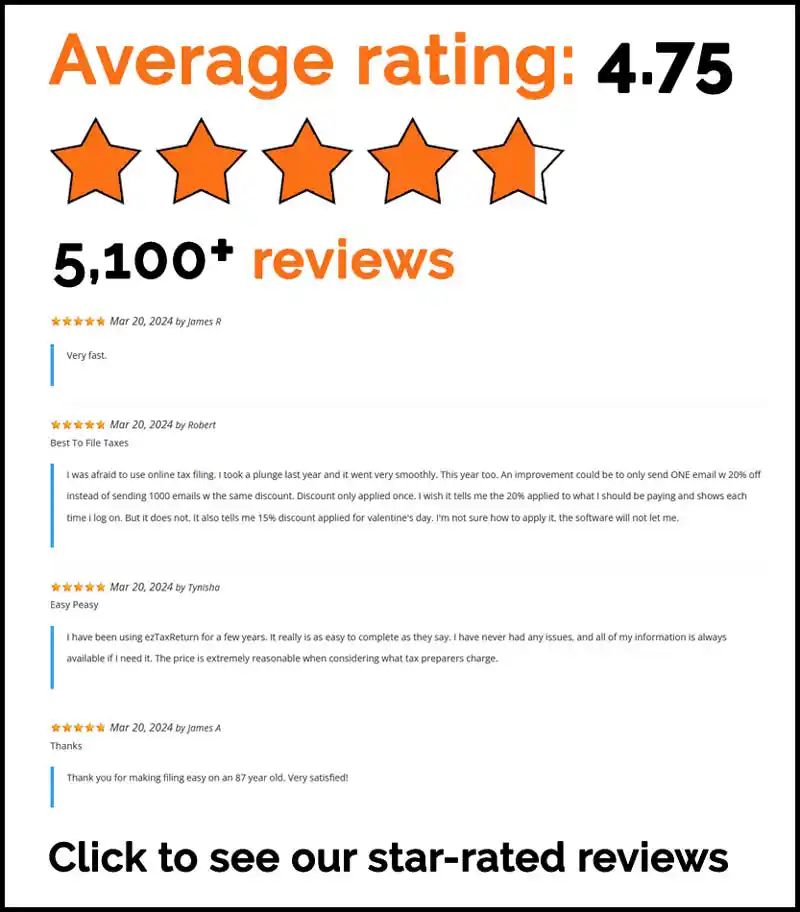The information in this article is up to date for tax year 2024 (returns filed in 2025).
Don’t miss the tax deadline! Your 2024 federal tax return is due on April 15, 2025. If you expect a tax refund, it’s best to file early so you can receive your refund faster. However, if you need more time to file your taxes, you can easily file a tax extension. While a tax extension gives you an additional six months to file, it’s important to note that the IRS still expects your payment on time. Is filing a tax extension a good idea? Here are the pros and cons of filing a tax extension.
Pro: Requesting a tax extension is easy
While you cannot request a tax extension through ezTaxReturn, it’s easy to file an extension on your own. To request a federal tax extension, download and complete Form 4868, Application for Automatic Extension of Time To File U.S. Individual Income Tax Return, and mail it to the IRS by April 15th. This will give you until October 15, 2025, to file your return. The tax extension form must be filed before the original tax filing deadline. However, note that if you’re self-employed, you must still make your first quarter estimated tax payment by April 15th.
Pro: Filing a tax extension allows extra time to track down missing forms and receipts
Accurate tax filing requires all necessary documents. If you’re missing receipts or still waiting for a W-2 form, filing a tax extension provides extra time to get them. Start by contacting your employer for a copy of your W-2 and verify your mailing address. If your employer is uncooperative or the business has closed, call the IRS at 1-800-829-1040 for a substitute copy. If you’re unable to get the missing documents, you can file Form 4852, Substitute for Form W-2, to estimate your wages and tax withheld. If you receive your missing forms after you’ve filed, you can always amend your tax return using Form 1040-X.
Pro: A tax extension helps you avoid the late filing penalty
Filing a tax extension can help you avoid the late filing penalty. If you submit your tax return by the October 15th deadline, you will avoid the IRS penalty, which is typically 5% of your unpaid taxes for each month you’re late. After 60 days, the penalty increases to $485 or 100% of your unpaid taxes—whichever is lower. By requesting a tax extension, you’ll get extra time to avoid this penalty.
Con: Even if you file an extension your payment is still due on April 15th
One of the major cons of filing a tax extension is that while you get more time to file your tax return, your payment is still due by the April 15th deadline. If you owe taxes, missing the payment deadline will result in accumulating penalties and interest. The failure-to-pay penalty starts at 5% per month and can rise to 25%. The best strategy is to file your taxes on time and pay as much as you can before the due date. The IRS offers several payment options, such as installment plans, to help you manage your balance.
Con: Filing an extension won’t make the process any easier
While filing a tax extension gives you more time, it doesn’t necessarily make the tax filing process easier. Procrastinating could lead to the same stress as filing at the last minute. The key to a smooth filing process is organization. Use a tax preparation checklist to gather all the necessary forms, receipts, and information. With tax software like ezTaxReturn, you can quickly and easily file your tax return online. Our step-by-step instructions guide you through every part of the process, helping you file your taxes quickly and stress-free.
The articles and content published on this blog are provided for informational purposes only. The information presented is not intended to be, and should not be taken as, legal, financial, or professional advice. Readers are advised to seek appropriate professional guidance and conduct their own due diligence before making any decisions based on the information provided.




